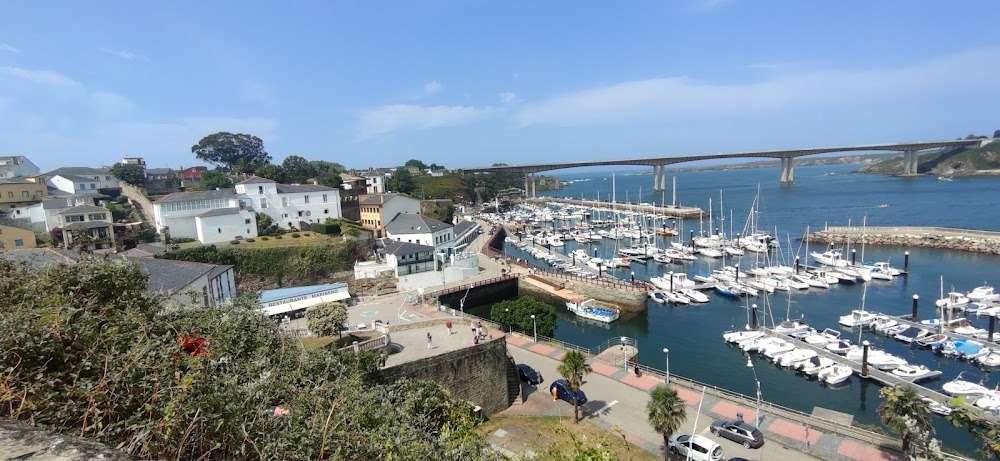Oscuro y Lucientes Filming Locations
Oscuro y Lucientes Filming Locations
Madrid, Spain's central capital, is a city of elegant boulevards and expansive, manicured parks such as the Buen Retiro. It’s renowned for its rich repositories of European art, including the Prado Museum’s works by Goya, Velázquez and other Spanish masters. The heart of old Hapsburg Madrid is the portico-lined Plaza Mayor, and nearby is the baroque Royal Palace and Armory, displaying historic weaponry.
Bordeaux, hub of the famed wine-growing region, is a port city on the Garonne River in southwestern France. It’s known for its Gothic Cathédrale Saint-André, 18th- to 19th-century mansions and notable art museums such as the Musée des Beaux-Arts de Bordeaux. Public gardens line the curving river quays. The grand Place de la Bourse, centered on the Three Graces fountain, overlooks the Miroir d’Eau reflecting pool.
Gijón is a large coastal city in northern Spain. It’s known for its maritime heritage and the old fishermen’s quarter of Cimadevilla. Santa Catalina hill has a clifftop park and sculpture. The 18th-century Revillagigedo Palace houses an international arts center. It adjoins the Collegiate Church of San Juan Bautista, now a concert hall. Nearby is the 16th-century Clock Tower, with a museum about the city.
Oviedo is a town in northwest Spain between the Cantabrian Mountains and the Bay of Biscay. The capital of Asturias, it’s known for its medieval old town, the site of the Gothic Oviedo Cathedral with its 9th-century Holy Chamber. The Archaeological Museum of Asturias, in a nearby convent, displays regional artifacts. The Fine Arts Museum of Asturias includes 2 palaces and has an expansive Spanish art collection.
Fuendetodos is a town in the Campo de Belchite comarca, in Aragon, Spain, located about 44 kilometers south-east of Zaragoza. As of 2011, it had a population of approximately 178. The town is associated with painter Francisco de Goya, who was born in Fuendetodos in 1746, and contains a museum dedicated to his work.
Zaragoza is the capital of northeastern Spain's Aragon region. Overlooking the Ebro River in the city center is baroque Nuestra Señora del Pilar basilica, a famous pilgrimage site with a shrine to the Virgin Mary and multiple domes. Mudéjar-style landmarks, combining Islamic and Gothic architecture, include the Aljafería, an 11th-century Moorish palace, and the Cathedral of the Savior, begun in the 12th century.
Santiago de Compostela is the capital of northwest Spain’s Galicia region. It’s known as the culmination of the Camino de Santiago pilgrimage route, and the alleged burial site of the Biblical apostle St. James. His remains reputedly lie within the Catedral de Santiago de Compostela, consecrated in 1211, whose elaborately carved stone facades open onto grand plazas within the medieval walls of the old town.
Salamanca, in northwestern Spain, is the capital of Salamanca province, part of the Castile and León region. With a history dating back to the Celtic era, it’s known for its ornate sandstone architecture and for the Universidad de Salamanca. Founded in the 1100s and a key intellectual center in the 15th-16th centuries, the university continues to add to the city’s vibrancy with its international student population.
Tudela is a city in northern Spain. It’s known for its Gothic, Renaissance and baroque architecture. Tudela Cathedral has a Romanesque cloister, 15th-century paintings and a Gothic carving of Santa Ana. Santa María Magdalena Church has an elaborate carved facade and overlooks the River Ebro. Northeast, Bardenas Reales is a semi-desert natural park with Aleppo pine forests, ravines and cliffs, and home to eagle owls.
Oscuro y Lucientes (2018)
Goya's body remained forgotten in a pantheon in Bordeaux. Decades later, everyone present at the exhumation was greatly surprised: Goya's skull was missing.


